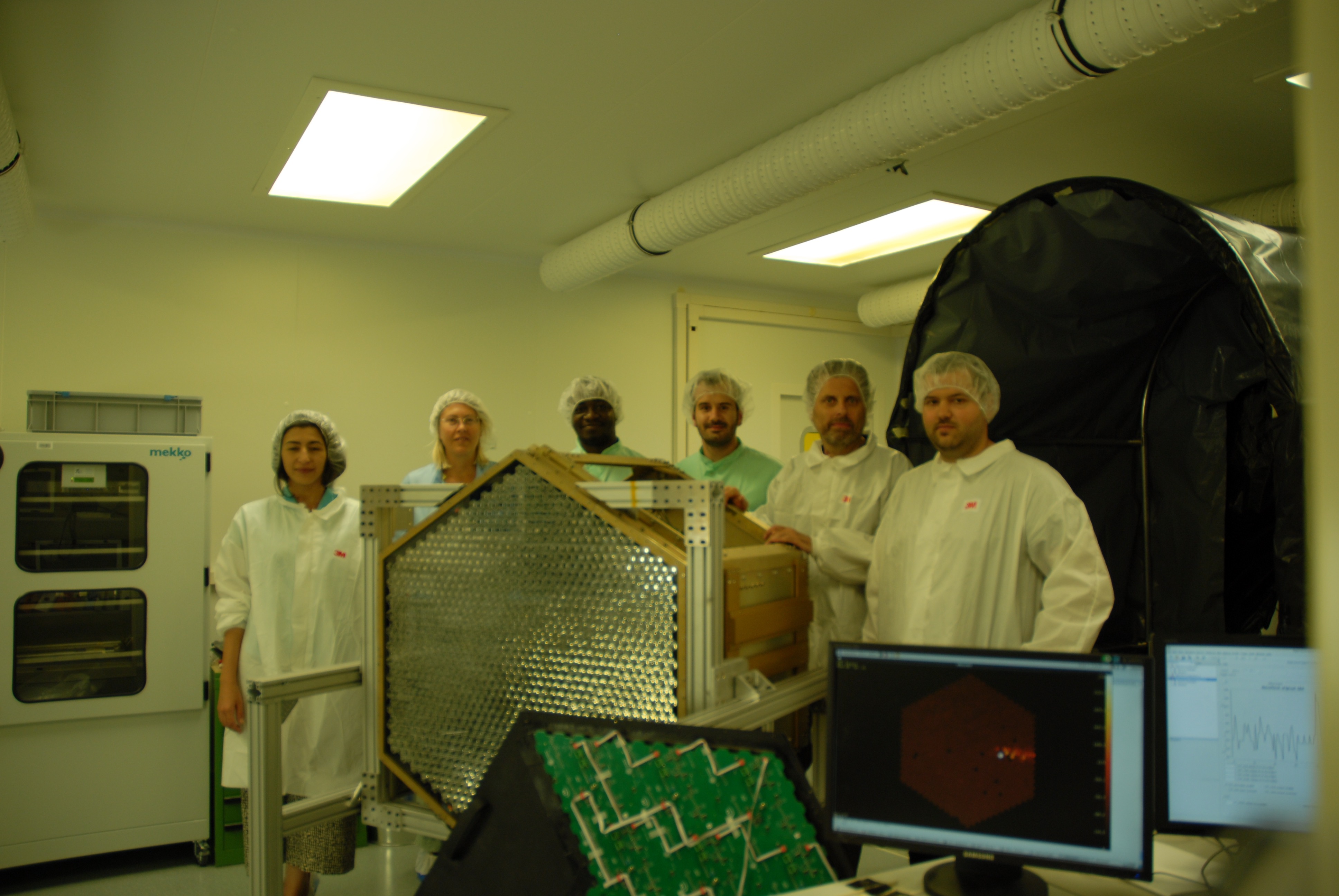Small size telescope (SST-1M)
The single mirror 4m Davies-Cotton SST project
Our group is actively working on the design and construction of prototypes for Small Sized Telescopes (SSTs). These telescopes are conceived to cover the highest energy range of CTA between a few TeV and 300 TeV. Our prototype uses the Davies-Cotton design for the optics and telescope structure, which is a standard and already proven design together with an innovative camera using Silicon-Photomultipliers (SiPMs) for the photosensors reducing its cost while increasing the observation time of the telescope. Unlike photomultipliers, SiPMs can operate during high levels of moonlight which is a key factor in the high-energy region where exposure is more important to improve the sensitivity than background reduction. Our SST-1M design has a focal length of 5.6 m, dish diameter of 4 meters, and Field-of-View (FoV) of 9 deg. and pixel angular opening of 0.24 deg.
 The prototype structure of this 4m Davies-Cotton telescope was installed in Krakow. The total weight of the current design is about 8.6 tons while the camera weighs in total 200 kg. The compactness of the SST-1M design is an advantage for transportation to the site while the solidity of the frame makes it suitable even for sites well above 2 km of altitude. Currently, this design has the lowest cost among SSTs proposals.
The prototype structure of this 4m Davies-Cotton telescope was installed in Krakow. The total weight of the current design is about 8.6 tons while the camera weighs in total 200 kg. The compactness of the SST-1M design is an advantage for transportation to the site while the solidity of the frame makes it suitable even for sites well above 2 km of altitude. Currently, this design has the lowest cost among SSTs proposals.
The project is run by 7 Institutions for the University of Geneva and a sub-consortium of Polish institutions.
The mirror will be composed of 18 hexagonal facets with dimension flat-to-flat of 78 cm and will offer a total effective collection area of 6.47 m2 after removing shadowing due to mast and camera chassis, taking into account the inclination of facets and considering the reflectance effect of the mirror coating with AlSiO2 which between 330 and 600 nm is 0.87 ± 0.01.
The camera is composed of two elements that required considerable R&D: the photo-detection plane (PDP) composed of custom-made hexagonal SiPMs, produced by Hamamatsu in collaboration with DPNC, and a fully digital readout and trigger electronics, DigiCam. The PDP contains 1296 pixels that couple the sensors to an optimized optical light concentrator with a dichroic coating. The reflective coating was selected so that its maximum reflectivity is below 400 nm and for large incident angles. A filter on the entrance window of the camera will cut off wavelengths (> 550 nm) where the night sky background (NSB) and albedo dominate.
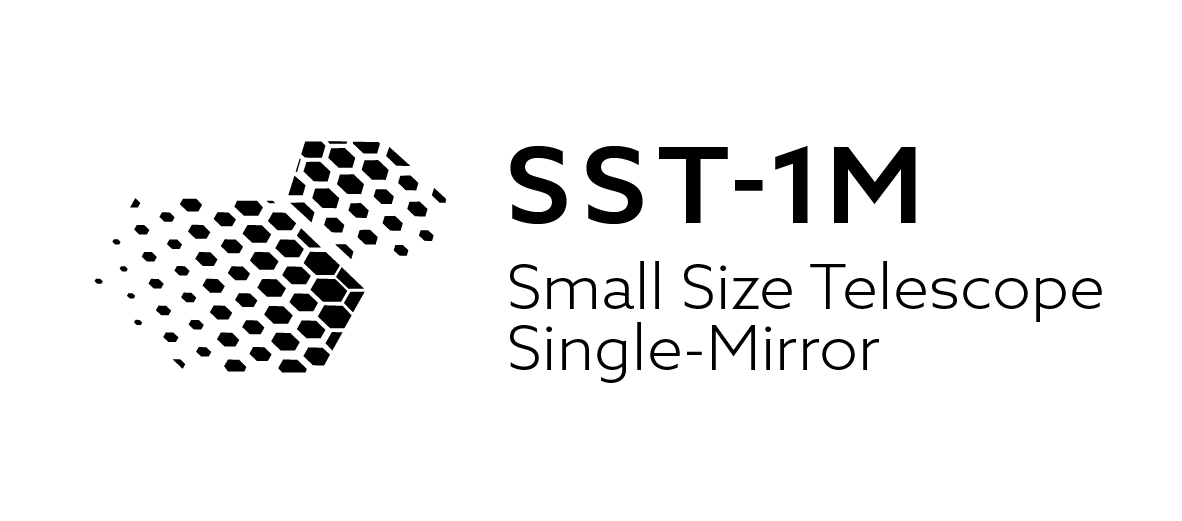
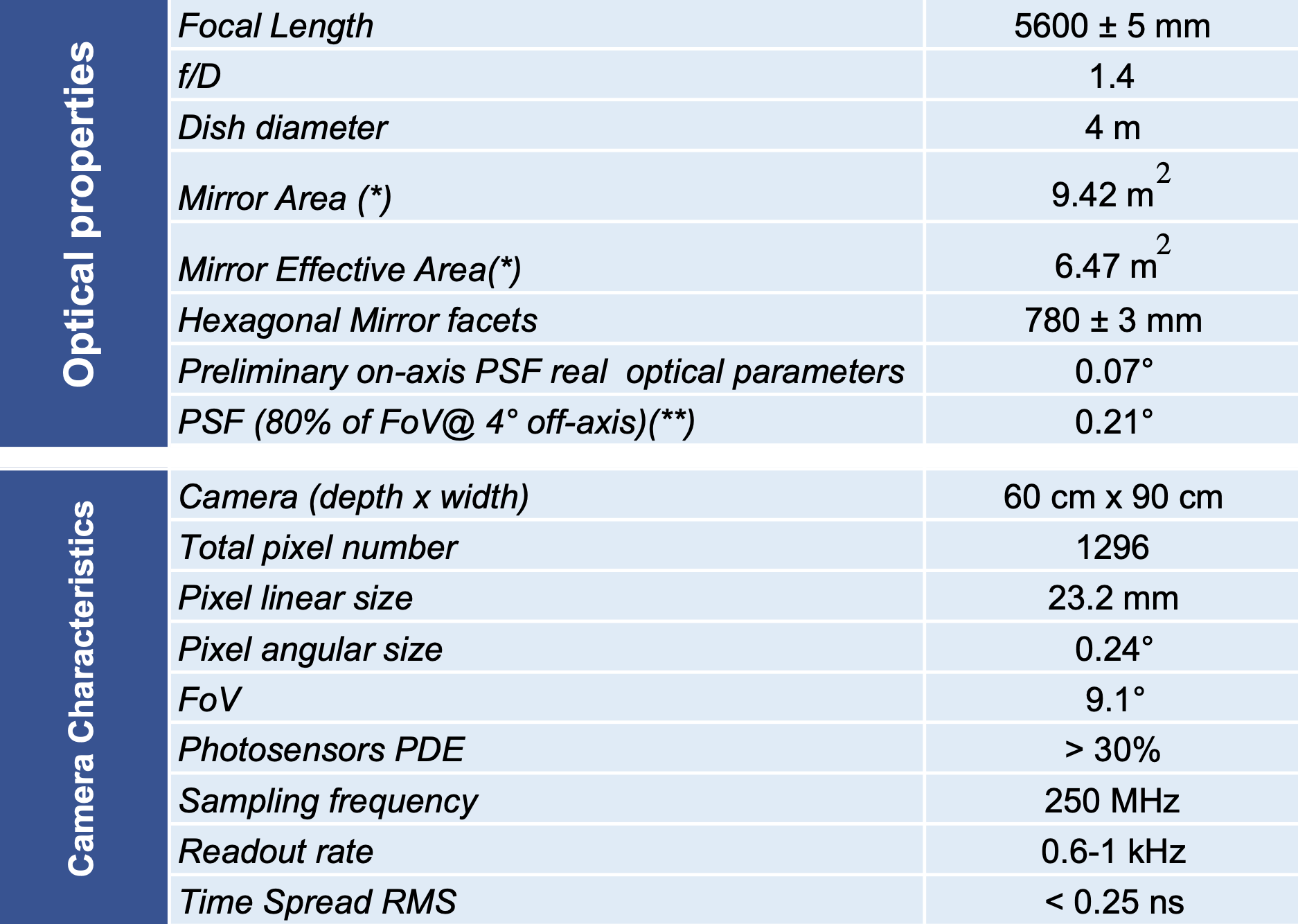
Optical System
The optical system forms the optical path for the Cherenkov light emitted by showers in the atmosphere which needs to be concentrated on the camera to be recorded.
The Davies-Cotton geometry provides the best imagining over a large field of view without introducing too much time dispersion in small-sized telescopes which makes an optimum solution for the SSTs. The primary mirror consists of 18 hexagonal facets of 780 cm flat-to-flat arranged in two concentric rings. Together they form a reflecting spherical dish of 4 meters in diameter. Glass mirrors are the baseline technology for these facets. The reflectivity of these mirrors with the proper coating might achieve 90%. Another approach using Sheet Moulding Compound (SMC) composite mirrors is also foreseen. SMC is a low-cost, lightweight, widespread, and semi-fabricated product used for compression molding.
The mirror fixation is based on a 3-point support enabling secure fixing to the telescope structure. The final orientation of the mirrors with respect to the camera is done using the alignment system. The orientation of each mirror can be modified during observations using the actuators, if necessary.
Camera
The SST-1M camera uses a novel approach: a photo-detection plane (PDP) based on SiPM sensors and a fully digital readout electronic (DigiCam). The camera will be equipped with 1296 pixels organized in 108 modules of 12 pixels each shaped into a hexagon which is about 1 m flat-to-flat and about 60 cm in thickness. The PDP follows the same geometry while the DigiCam is distributed in 3 mini-crates hosting its functional boards. Each mini-crate collects data from a specific sector of the PDP.
Our group constructed and assembled the camera parts in early 2017. The camera has gone through the calibration and the commissioning phase with intensive tests on the temperature control, cooling process, pixel monitoring, and trigger rates...
Photo-detector plane
The photosensors on the PDP will be coupled to a hollow optical concentrator in order to increase its collection area and the lateral shape of the concentrator was optimized to achieve the optimal efficiency. The angular entrance size of the light concentrator (angular pixel size) was selected based on the required angular resolution A value that is 4 times the Root Mean Square (RMS) of the telescope Point Spread Function (PSF) was selected in order to guarantee the inclusion of 95.4% of the photons from sources in a single pixel (p = 0.24°.). A smaller angular pixel size will increase the number of pixels on the camera without any benefit in the sampling of the images while a larger pixel size will spoil the angular capabilities of the telescope. The light concentrators have a cut-off angle of 24 deg. guaranteeing that all the light reflected from the primary mirror will arrive at the sensors.
The sensors are custom-made hexagonal shape SiPM from Hamamatsu design in cooperation with DPNC. These are the largest devices of this type with an active area of 93.56 mm2 divided into 4 channels. The 50-micrometer-cell size offers a 30% photodetection efficiency (< 40% in the latest versions of the sensor). The SiPMs also have a cross-talk probability of 20% and an operational voltage of 70V (65V for the newer version).
The whole camera will be sealed with an entrance window for protection against water and dust. The window will be made of a hexagonal Borofloat 33 (3.3 mm thick) borosilicate glass from SCHOTT. It will be coated with a dichroic wavelength filter to reduce the amount of night sky background entering in the camera. Additionally, and anti-reflective coating will be applied to increase the overall transmissivity of the entrance window.
Operation at Ondrejov Observatory in Czech Republic
The two SST-1M telescopes have been installed at the Ondrejov Observatory in 2021.
They are being commissioned for the first time in a proper observation site and already acquiring science data from the Crab Nebula together with the brighest and closest known blazars, such as Markarian 421 and 501.
Since February 2023, the installation of a synchronisation link between the two telescope allows to acquire data in so-called stereoscopic mode as seen in the images below (Top image: gamma candidate, Bottom: proton candidate). The mode of operation allows to better estimate the energy, arrival direction and the type of primary particle of the images captured by the two telescopes coincidently.
The data taking is done from remote places (Geneva, Prague, Olomouc, Krakow, Warsaw) thanks to a control software that allows nearly fully robotic operations.
The data analysis is being developed and the first physics results will be presented during the International Cosmic Ray Conference this year, 2023.
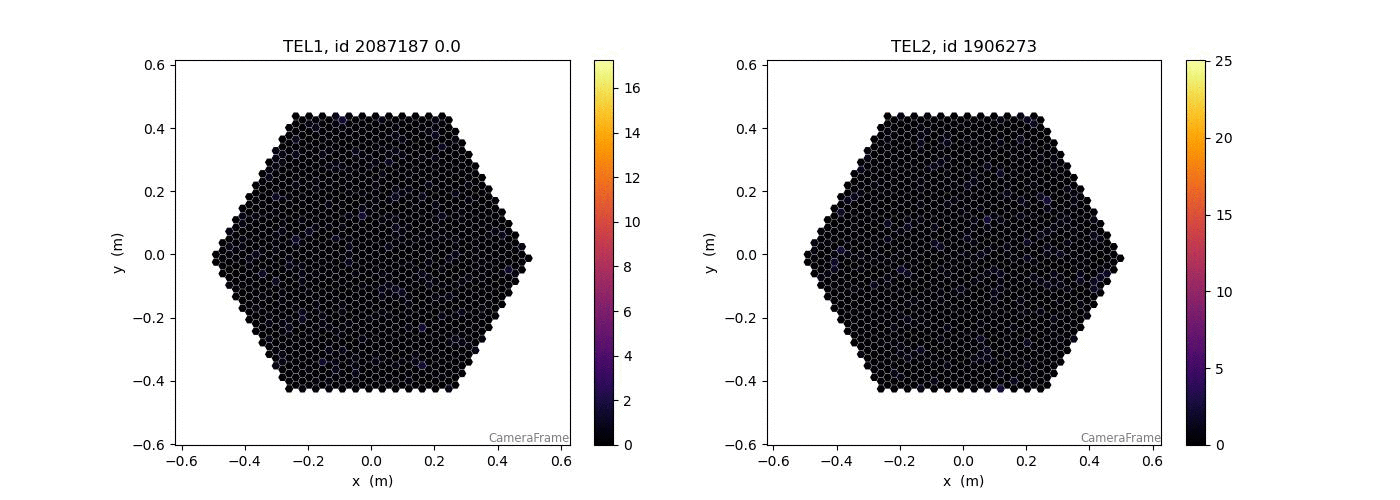

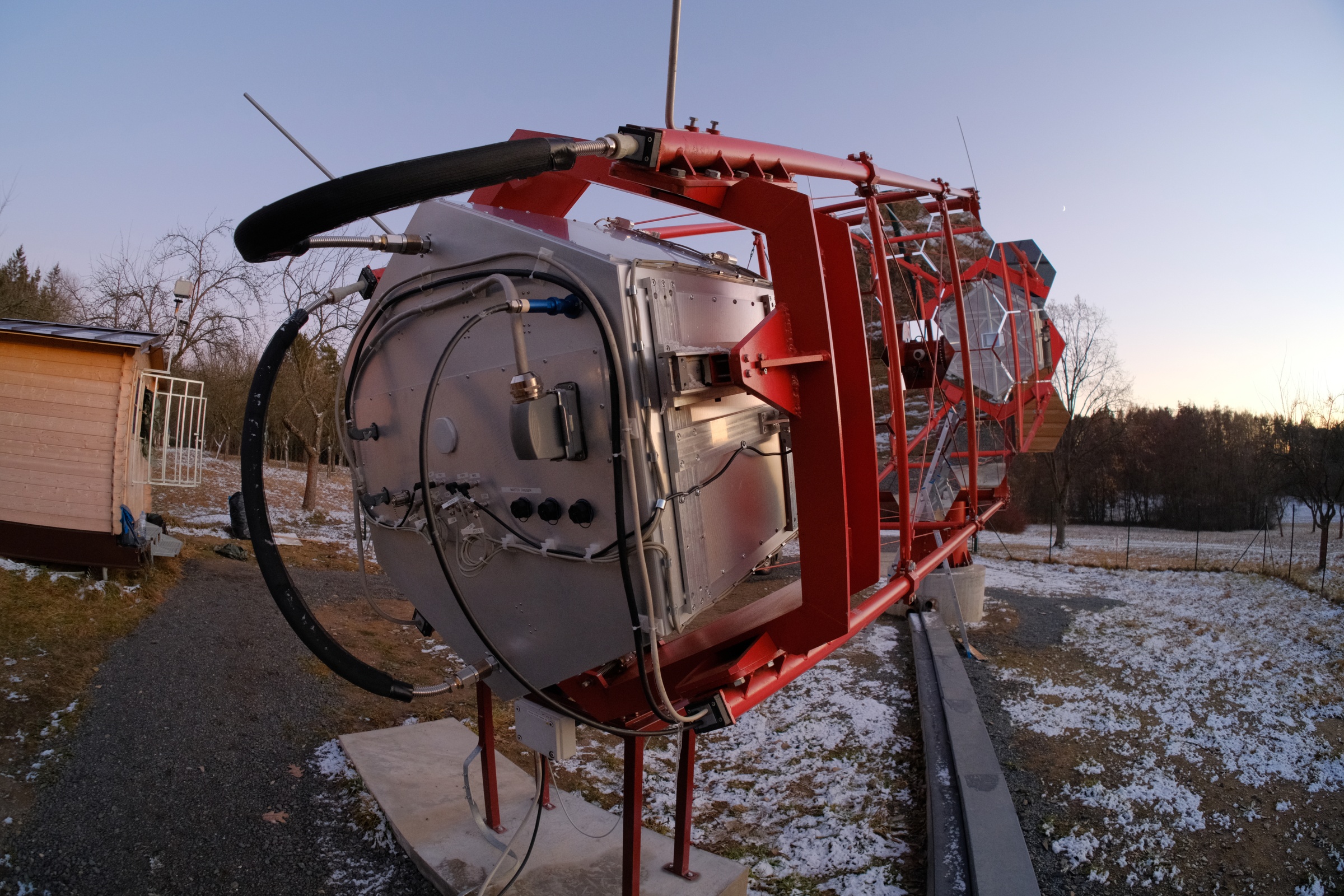
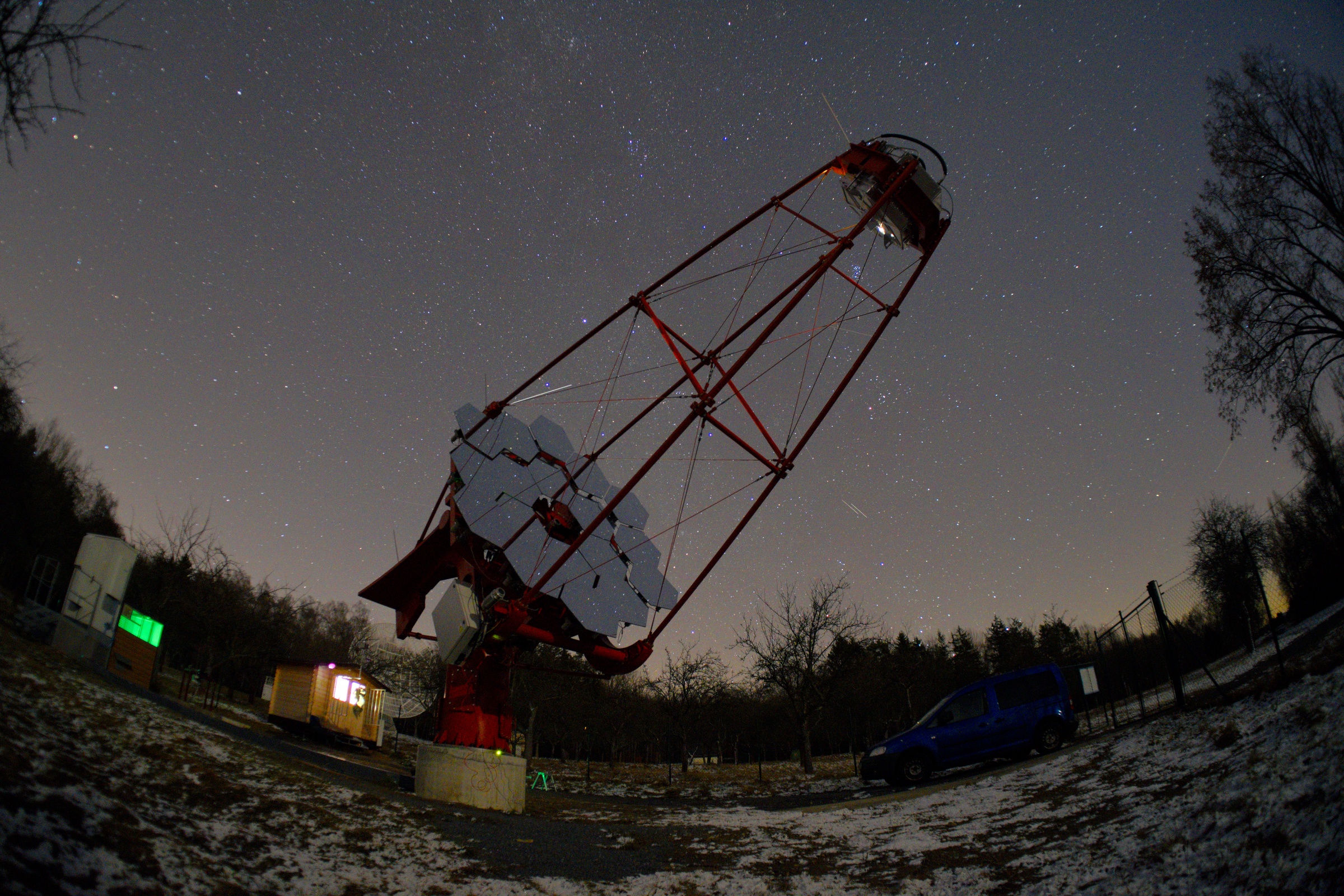
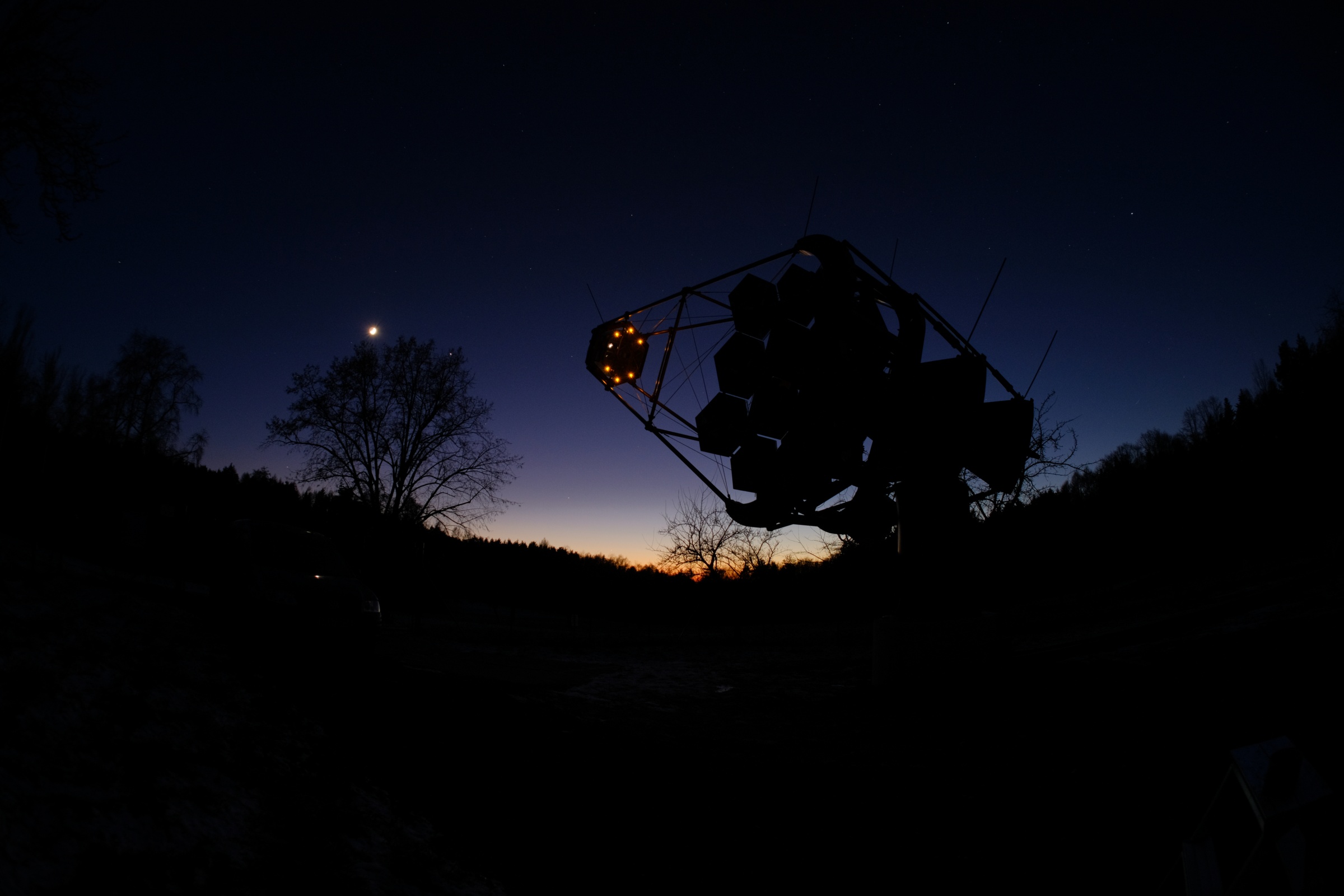
The Technical Design Review Document of the SST-1M Is available here.
A short video showing the assembly of the Photon Detection Plane of the SST-1M camera at UniGe :
A video of the telescope in Krakow operated from Geneva is here.
Many more pictures and videos of the different parts of the SST_1M camera performed by Geneva group can be found here.


